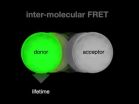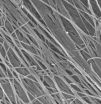(Press-News.org) ROCHESTER, Minn. — Feb. 24, 2014 — Blacks may be twice as likely as whites to develop multiple myeloma because they are more likely to have a precursor condition known as monoclonal gammopathy of undetermined significance (MGUS), a Mayo Clinic study has found. Not only is MGUS more common in blacks, but the type seen in the black population is also more apt to have features associated with a higher risk of progression to full-blown multiple myeloma, a cancer of a type of white blood cell in bone marrow.
The findings, which appear in the journal Leukemia, are from the first nationwide study to look at the precursor of multiple myeloma in blacks, whites, and Hispanics and could point the way toward tailored screening and preventive strategies for different racial groups. The study also uncovered different rates of the condition in different parts of the country, suggesting an environmental component to the racial disparities.
"We have known for a long time that there is a marked racial disparity in multiple myeloma, but the big question has been why that disparity exists," says the study's senior author, Vincent Rajkumar, M.D., a hematologist/oncologist at Mayo Clinic. "We suspected it may be genetic or it may be environmental. We also thought that the predisposing factor is more common, or it may be that the predisposing factor progresses to cancer much more quickly. We found that the answer is all of the above."
Multiple myeloma kills more than 10,000 Americans a year. The disease is caused by malignant cells that spread throughout the bone marrow and produce abnormal levels of M protein. Multiple myeloma is almost always preceded by MGUS, a premalignant condition in which levels of M protein are abnormally high. A number of studies have investigated the prevalence of MGUS in various populations. The most prominent took place in the predominantly white community of Olmsted County, Minn. There, researchers estimated that the premalignant condition occurred in approximately 3.2 percent of individuals ages 50 years and older.
In this study, Dr. Rajkumar and his colleagues at Mayo Clinic, the National Cancer Institute and the Centers for Disease Control and Prevention set out to determine the prevalence of MGUS in blacks and Hispanics, as well as whites in other parts of the country. They analyzed stored serum samples of 12,482 people over 50 years old from the National Health and Nutritional Examination Survey (NHANES), a nationally representative sample of the U.S. population.
By examining the M protein present in each sample, the researchers assessed both the prevalence of MGUS and its likelihood for progression. They found that the prevalence of MGUS was significantly higher in blacks (3.7 percent) compared with whites (2.3 percent) or Hispanics (1.8 percent), as were features that posed a higher risk of progression to multiple myeloma.
The researchers were surprised that the prevalence of MGUS in whites in their national sample was significantly lower than the rates previously reported for Olmsted County. However, when they broke down the national numbers into geographic regions, they found that people living in Northern and Midwestern states have a higher incidence of MGUS than those living in Southern and Western states.
"We would have missed this geographic difference if we hadn't looked at the whole country," says Dr. Rajkumar. "This is the largest study of its kind, and the first to look at MGUS in a sample of the entire U.S. population."
Dr. Rajkumar and his colleagues are now investigating the underlying causes of these geographic variations to see if they identify the genetic and environmental factors contributing to the risk of MGUS. They are also repeating their experiments in samples from individuals under age 50 in an effort to pinpoint when the risk of MGUS and, ultimately, multiple myeloma, begins.
INFORMATION:
Co-authors include Jerry Katzmann, Ph.D., Robert Kyle, M.D., Shaji Kumar, M.D., Angela Dispenzieri, M.D., Alexandra Greenberg, Terry Therneau, Ph.D., and L.J. Melton III, M.D., all of Mayo Clinic. The study was funded by the National Cancer Institute, the Jabbs Foundation, and the Henry J. Predolin Foundation.
About Mayo Clinic Cancer Center
As a leading institution funded by the National Cancer Institute, Mayo Clinic Cancer Center conducts basic, clinical and population science research, translating discoveries into improved methods for prevention, diagnosis, prognosis and therapy. For information on cancer clinical trials, call 507-538-7623.
About Mayo Clinic
Recognizing 150 years of serving humanity in 2014, Mayo Clinic is a nonprofit worldwide leader in medical care, research and education for people from all walks of life. For more information, visit 150years.mayoclinic.org, http://www.mayoclinic.org/ and newsnetwork.mayoclinic.org.
MEDIA CONTACT:
Joe Dangor
Mayo Clinic Public Affairs
50-284-5005
newsbureau@mayo.edu
Precursor of multiple myeloma more common in blacks than whites, Mayo study finds
2014-02-24
ELSE PRESS RELEASES FROM THIS DATE:
Higher risks among perinatal women with bipolar disorder
2014-02-24
PROVIDENCE, R.I. [Brown University] — Pregnant and postpartum women with bipolar disorder more frequently have significant mental health and early mothering challenges than other perinatal women undergoing psychiatric treatment, according to a study in the Journal of Affective Disorders. The findings indicate the importance of properly identifying the disorder and developing specific treatments for women during and after pregnancy, the lead author said.
"Similar to what you find with bipolar disorder in the nonperinatal population, the overall level of clinical severity ...
In the eye of a chicken, a new state of matter comes into view
2014-02-24
Along with eggs, soup and rubber toys, the list of the chicken's most lasting legacies may eventually include advanced materials such as self-organizing colloids, or optics that can transmit light with the efficiency of a crystal and the flexibility of a liquid.
The unusual arrangement of cells in a chicken's eye constitutes the first known biological occurrence of a potentially new state of matter known as "disordered hyperuniformity," according to researchers from Princeton University and Washington University in St. Louis. Research in the past decade has shown that ...
Watching how the brain works
2014-02-24
Coral Gables, Fla (Feb. 19, 2014) -- There are more than a trillion cells called neurons that form a labyrinth of connections in our brains. Each of these neurons contains millions of proteins that perform different functions. Exactly how individual proteins interact to form the complex networks of the brain still remains as a mystery that is just beginning to unravel.
For the first time, a group of scientists has been able to observe intact interactions between proteins, directly in the brain of a live animal. The new live imaging approach was developed by a team of ...
Costs vary widely for care of children with congenital heart defects across US hospitals
2014-02-24
Ann Arbor, Mich. – Costs of care differ significantly across hospitals for children born with heart defects, according to new research led by a University of Michigan researcher. Congenital heart defects are known to be the most common birth defects, impacting nearly 1 in every 100 births.
The cost of care for children with congenital heart disease undergoing surgical repair varied as much as nine times across a large group of U.S. children's hospitals, says lead author Sara K. Pasquali, M.D., M.H.S., associate professor of pediatrics at the University of Michigan Medical ...
Opioid abuse initiates specific protein interactions in neurons in brain's reward system
2014-02-24
(New York) – Identifying the specific pathways that promote opioid addiction, pain relief, and tolerance are crucial for developing more effective and less dangerous analgesics, as well as developing new treatments for addiction. Now, new research from the Icahn School of Medicine at Mount Sinai reveals that opiate use alters the activity of a specific protein needed for the normal functioning of the brain's reward center. Investigators were able to block the protein, as well as increase its expression in the mouse nucleus accumbens, a key component of the brain's reward ...
Abdominal fat accumulation prevented by unsaturated fat
2014-02-24
New research from Uppsala University shows that saturated fat builds more fat and less muscle than polyunsaturated fat. This is the first study on humans to show that the fat composition of food not only influences cholesterol levels in the blood and the risk of cardiovascular disease but also determines where the fat will be stored in the body. The findings have recently been published in the American journal Diabetes.
The study involved 39 young adult men and women of normal weight, who ate 750 extra calories per day for seven weeks. The goal was for them to gain three ...
Medical researchers use light to quickly and easily measure blood's clotting properties
2014-02-24
VIDEO:
This video shows the rapid "twinkling " or intensity fluctuations of the speckle pattern in a drop of unclotted whole blood. The rapid "twinkling " is due to the fast thermally-driven motion...
Click here for more information.
WASHINGTON, Feb. 24—Defective blood coagulation is one of the leading causes of preventable death in patients who have suffered trauma or undergone surgery. The body's natural defense against severe blood loss is the clotting ...
NIST microanalysis technique makes the most of small nanoparticle samples
2014-02-24
Researchers from the National Institute of Standards and Technology (NIST) and the Food and Drug Administration (FDA) have demonstrated that they can make sensitive chemical analyses of minute samples of nanoparticles by, essentially, roasting them on top of a quartz crystal. The NIST-developed technique, "microscale thermogravimetric analysis," holds promise for studying nanomaterials in biology and the environment, where sample sizes often are quite small and larger-scale analysis won't work.*
Chemical analysis of nanoparticles is a challenging task, and not just because ...
New biological scaffold offers promising foundation for engineered tissues
2014-02-24
Our cells don't live in a vacuum. They are surrounded by a complex, nurturing matrix that is essential for many biological functions, including growth and healing.
In all multicellular organisms, including people, cells make their own extracellular matrix. But in the lab, scientists attempting to grow tissue must provide a scaffold for cells to latch onto as they grow and proliferate. This engineered tissue has potential to repair or replace virtually any part of our bodies.
Typically, researchers construct scaffolds from synthetic materials or natural animal or human ...
Is previous hypoglycemia a risk factor for future hypoglycemic episodes?
2014-02-24
New Rochelle, NY, February 24, 2014—The automatic "threshold suspend" (TS) feature of an insulin pump helps prevent life-threatening hypoglycemic events when the device's sensor detects blood glucose concentrations below the preset threshold. However, in individuals with type 1 diabetes who have had previous episodes of hypoglycemia the TS feature may be less effective at preventing subsequent events, according to important new results from the ASPIRE study published in Diabetes Technology & Therapeutics (DTT), a peer-reviewed journal from Mary Ann Liebert, Inc., publishers. ...







